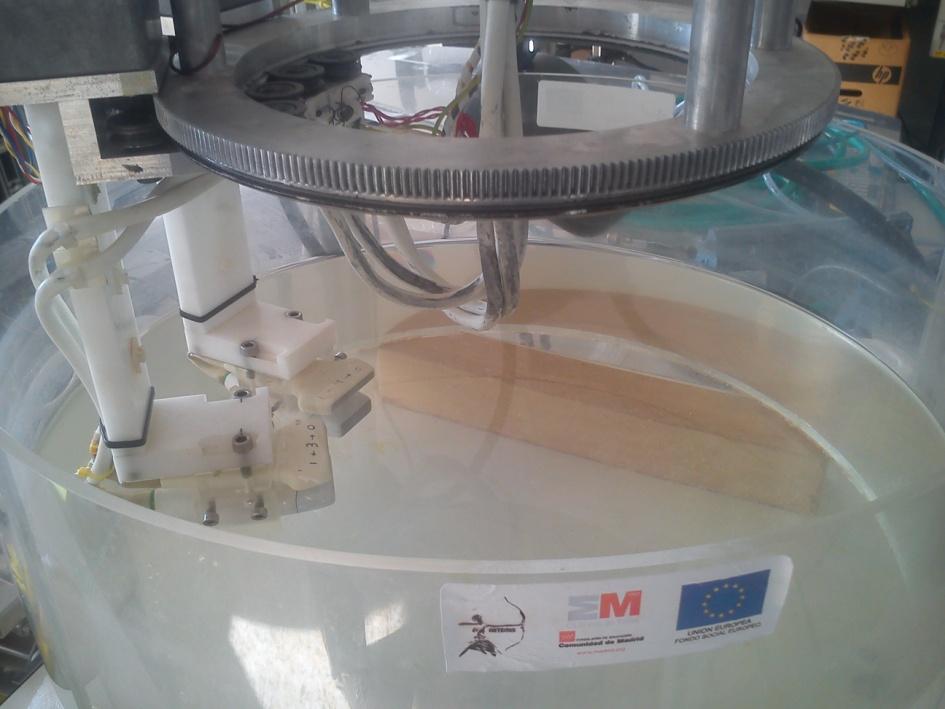2D CSIC/UCM USCT
Access to provided data and code
The provided data set contains a circular scan of a tissue mimicking phantom based on water, gelatin, graphite powder and alcohol. It includes a homogenous background with two cylindrical hollows: One filled with water and the other filled with a gelatin preparation with different proportions. Two 0.25mm diameter steel needles were inserted to simulate hard inclusions. Furthermore, a second dataset with the same acquisition parameters but without phantom (only water) is provided for calibration purposes:
- 1: Gelatine data set with 2 steel needles. Data + script download link: tom_050815_ph15_1.zip. (Total data amount: 44MB)
- 2: Reference data set with water only. Data + script link: tom_050815_agua.zip. (Total data amount: 41MB)
License
The data is freely available dual licensed under the 3-clause BSD-license and the “Open Data Commons Attribution License”, in accordance with the “Berlin Declaration”. Request to the licensee is the acknowledgment/attribution, following the scientific standards.
System description

Figure 1: MUBI system.
The Multimodal Ultrasound Breast Imaging System (MUBI) is a joint development of the Spanish National Research Council (CISC) and the Complutense University of Madrid (UCM), under the projects ARTEMIS and TOPUS. It is intended to be a flexible platform for multi-modal ultrasound imaging research, mainly oriented to breast diagnosis. Up to now, the following imaging techniques have been implemented:
– Phased-Array full angle spatial compound (FASC).
– Acoustic Radiation Force Imaging (ARFI) full angle spatial compound
– Ultrasound Computed Tomography (USCT) speed of sound and attenuation reconstruction
The system is formed by two 3.5 MHz, 128 elements and 0.22 mm pitch arrays (P2-4/30EP, Prosonic, Korea) that rotate with 95 mm radius into a water tank, controlled by independent stepper motors with an angular resolution of 0.1º. A 128 channel full parallel ultrasound system (SITAU-112, Dasel, Spain) is used for excitation and signal acquisition. While only one array can be used as emitter, both of them can act as receivers, allowing pulse-echo and through-transmission operation modes. The system is able to perform emission and reception beamforming in real-time (useful for implementing image compounding algorithms) and also gives access to the individual signals received by each array element (useful for USCT reconstruction). Finally, a standard personal computer controls the motors movement and the ultrasound equipment with Matlab scripts. Videos of the system working can be seen here:
https://youtu.be/wrUni5JfQSE.
https://youtu.be/f5nwNqZV9yc.
More information under:
MUBI description.pdf